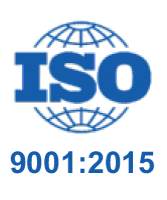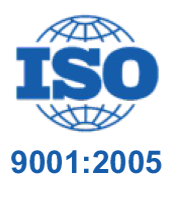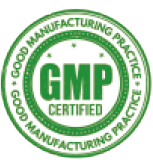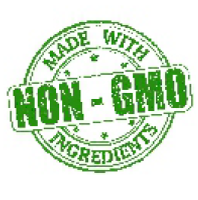Biological and therapeutic effects of ortho-silicic acid and some ortho-silicic acid-releasing compounds:
Introduction
Silicon (Si) is the most abundant element (27.2%) present in the earth's crust following oxygen (45.5%) [1]. Silicon is known for a number of important chemical and physical properties, i.e. semiconductor property that are used in various scientific and technical applications. These Si features, along with structural complexity of its compounds, have attracted researchers from the earliest times [2]. In particular, silicon dioxide or silica (SiO2) is the most studied chemical compound following water, and the most important Si-containing inorganic substance [1
Lower molecular forms, especially the ortho-silicic acid (H4SiO4; Figure 1), play a crucial role in delivering silicon to the living organisms’ cells and thus represent major sources of silicon for both humans and animals. Most of the silica in aqueous systems and oceans is available in the form of H4SiO4, which makes it an important compound in environmental silicon-chemistry and biology [3]. In this paper, we critically review the most recent findings on biological effects of Si and ortho-silicic acid on animals and human beings. Moreover, we propose that previously observed positive biological effects of various colloidal silicic acids (various hydrated silica gels) as well as some zeolites [4–6], e.g. zeolite A (Figure 2) and clinoptilolite (Figure 3), might be, at least partially, ascribed to the ortho-silicic acid-releasing property.
Silicon represents the third most abundant trace element in the human body [7, 8]. For example, it is present in 1–10 parts-per-million (ppm) in hair [9], nails [10], in the cornfield epidermis, and in the epicuticle of hair [11, 12]. Silicon is naturally present in food as a silicon dioxide (SiO2), free ortho-silicic acid (H4SiO4), silicic acids bounded to certain nutrients, and in the silicate form. Although silicon is a life-important micronutrient mineral, in our opinion it has not received adequate attention. Considering the abundance of silicon, both in the nature and humans, it is expected that it should play an important role in human and animal health.
Silicon bioavailability and consumption
Presently, many biological roles of silicon remain unknown [13]. Consequently, the recommended daily silicon intake (RDI) has not yet been set [13, 14]. Considering the risk assessment of amorphous silicon dioxide as common silicon source (e.g. food additive E551), the safe upper intake level (UIL) may be estimated as 700 mg/day for adults, that is the equivalent to 12 mg silicon/kg bw/day for a 60 kg adult [15]. These numbers refer to the amorphous silicon dioxide form and only small amounts of silicon (as H4SiO4) are actually released in the gastrointestinal (GI) tract and subsequently absorbed in the systemic circulation. Due to lack of data, it is difficult to set a recommended upper intake level for silicon. Moreover, little information on the intake of dietary silicon by humans is available. A mean intake of daily silicon has been reported in Finland [16], (29 mg silicon/day) and in a typical British diet (20–50 mg silicon/day) [17–19]. This corresponds to 0.3-0.8 mg/silicon/kg bw/day for a 60 kg person. These data are in the same range as the estimated mean intakes of silicon in the USA (30 and 33 mg silicon/day in men, and 24 and 25 mg silicon/day in women, respectively) [8]. Silicon intake decreases with age to less than 20 mg silicon/day (18.6 ± 4.6 mg silicon/day for elderly British woman in an unrelated randomised controlled intervention study) [20].
Generally, silicon is abundantly present in foods derived from plants such as: cereals, oats, barley, white wheat flour, and polished rice. In contrast, silicon levels are lower in animal foods including meat or dairy products. Furthermore, silicon is present in drinking waters, mineral waters, and in beer as well [17]. Indeed, the major sources of silicon in the typical Western hemisphere diet comes from cereals (30%), followed by fruits, beverages and vegetables, which altogether comprise around 75% of total silicon intake [20]. Even though plant food contains high levels of silicon, its bioavailability from these sources is questionable, due to poor solubility of actual silicon forms present in these foods [18, 19, 22]. Efficient absorption in the GI tract would require their breakdown to soluble species such as ortho-silicic acid, present in drinking and mineral waters in the range of 2 to 5 mg silicon/L [23] and in beer ranging from 9 to 39 mg silicon/L [18, 24]. Absorption studies indicate that the ortho-silicic acid is a main readily bioavailable source of silicon for humans, whereas its higher polymers are not of significant absorbability [25]. In a placebo-controlled study on eight volunteers, Jugdaohsingh et al. [25] showed that 53% of administered ortho-silicic acid is excreted in the urine, whereas the ingestion of polymeric silicic acid causes only a marginal increase of silicon in the urine. This result substantiates the statement that polymeric silicic acids and amorphous silicon dioxide are of poor bioavailability.
Besides the ortho-silicic acid, water soluble silicates are bioavailable silicon forms as well. For instance, pharmaceutically acceptable alkali metals silicates (M2SiO3; M= Na, K) in adequately diluted aqueous solutions, release ortho-silicic acid (H4SiO4) upon contact with stomach hydrochloric acid (HCl). Popplewell et al. [26] employed a tracer dose of radiolabelled ammonium silicate to measure total uptake and urine excretion. Their results revealed that 36% of ingested dose was absorbed and completely excreted in urine within 48h. However, elimination occurred in two steps where the major dose (90%) has been excreted within the first 2.7 hours. They suggested that excess silicon is eliminated from the body through two distinct processes, differing significantly in the duration. The ‘slower process’ is thought to include the intracellular uptake and release of silicon, whilst the ‘faster process’ probably includes retention of silicon in the extracellular fluids [26]. These data report on increased silicon levels in serum upon consumption of silicon-rich food [7, 27], showing that at least some silicon is available from food as well. Indeed, selective silicon deprivation in rats showed a significant drop of urinary silicon excretion and fasting silicon serum concentration, suggesting that the rats actively regulate silicon levels via urinary conservation, perhaps through renal re-absorption [21]. Most of silicon present in the serum is filtered by the kidney [7, 28] suggesting the kidney as its major excretion route; silicon levels in serum correlate with those in urine. However, it is still not clear how and if the body can efficiently retain adequate doses of silicon.
Therapeutic and biological effects of ortho-silicic acid and certain ortho-silicic acid-releasing compounds
It was reported that silicon is connected with bone mineralization and osteoporosis [31], collagen synthesis and ageing of skin [11], condition of hair and nails [32], atherosclerosis [33, 34], Alzheimer disease [9, 35, 36], as well as with other biological effects and disorders. Trace minerals are known to generally play a vital role in the human body homeostasis [37] and the serum levels of silicon are similar to other trace elements, i.e. of iron, copper, and zinc [38]. Silicon is excreted through the urine in similar orders of magnitude as calcium. Some researches claim that silicon does not act as a protein-bounding element in plasma and is believed to exist almost entirely as un-dissociated monomeric ortho-silicic acid [28]. While early analyses showed that serum contains 50–60 μg silicon/dL [38, 39], more recent analyses indicate that human serum contains 11–25 μg silicon/dL, or levels ranging between 24 and 31 μg/dL (8.5 and 11.1 μmol/L), detected by absorption spectrometry in large population groups [40]. Interestingly, pregnant women had very low serum silicon concentrations (3.3-4.3 μg/dL) in comparison with infants that have high concentrations between 34 and 69 μg/dL [27, 41]. Moreover, silicon concentrations in serum showed a statistically significant age and sex dependency, as it seems that silicon concentrations decrease with age, especially in woman [40].
Biological importance of silicon might be analysed in the context of its bio-distribution in the body. For example, the highest silicon concentration has been measured in connective tissues, especially in the aorta, tracheas, bone, and skin. Low levels of silicon in the form of ortho-silicic acid [42–44] may be found in liver, heart, muscle, and lung [45]. It is therefore plausible to assume that observed decrease of silicon concentration in the ageing population may be linked to several degenerative disorders, including atherosclerosis. Supplementation of the regular diet with bioavailable forms of silicon may therefore have a therapeutic potential including prevention of degenerative processes. Several experiments have already confirmed this hypothesis. For example, in a controlled animal study, spontaneously hypertensive rats had lower blood pressure upon supplementation with soluble silicon [44], whilst silicon deficiency in animals has been found to be connected with bone defects and impaired synthesis of connective tissue compounds, such as collagen and glycosaminoglycans [46–48]. It is therefore reasonable to assume that silicon deficiency or lower bioavailability may be linked to problems with bone structure and collagen production. Moreover, silicon was shown to be uniquely localized in active growth areas in young bones of animals where a close relationship between silicon concentration and the degree of mineralization has been assessed [46, 49]. Studies confirmed the essential role of silicon in the growth and skeletal development of chicks that during silicon deprivation showed significantly retarded skeletal development [50]. Experimental silicon deprivation in rats [51–53] and chicks [46, 47] demonstrated striking effects on skeletal growth and bone metabolism as well.
Moreover, Reffit et al. [54] found that ortho-silicic acid stimulates collagen type 1 synthesis in human osteoblast-like cells and skin fibroblasts and enhances osteoblastic differentiation in the MG-63 cells in vitro. Ortho-silicic acid did not alter collagen type 1 gene expression, but it modulated the activity of prolyl hydroxylase, an enzyme involved in the production of collagen [55]. Similarly, Schütze et al. [56] reported that the zeolite A stimulated DNA synthesis in osteoblasts and inhibited osteoclast-mediated bone resorption in vitro. This is probably attributable to the ortho-silicic acid-releasing property of zeolite A.
The mechanism underlying observed biological effects of silicon may probably be ascribed to its interrelationships with other elements present in the body such as molybdenum [57] aluminium [9, 35, 58, 59], and calcium [46, 49, 50]. For instance, it was proven that silicon levels are strongly affected by molybdenum intake, and vice versa[59]. Furthermore, silicon accelerates the rate of bone mineralization and calcification as shown in controlled animal studies, in a similar manner that was demonstrated for vitamin D [11, 50]. It is well known that vitamin D increases the rate of bone mineralization and bone formation [60], and that its deficiency leads to less mature bone development. Vitamin D is known to be important in calcium metabolism, but silicon-deficient cockerels’ skulls in a controlled animal study showed lower calcification and collagen levels irrespective of the vitamin D dietary levels suggesting a vitamin D-independent mechanism of action [61].
Osteoporosis
Osteoporosis is among leading causes of morbidity and mortality worldwide [62]. It is defined as a progressive skeletal disorder, characterised by low bone mass (osteopenia) and micro-architectural deterioration [63]. Interestingly, the administration of silicon in a controlled clinical study induced a significant increase in femoral bone mineral density in osteoporotic women [31]. Direct relationship between silicon content and bone formation has been shown by Moukarzel et al. [64]. They found a correlation between decreased silicon concentrations in total parenterally fed infants with a decreased bone mineral content. This was the first observation of a possible dietary deficiency of silicon in humans. A randomized controlled animal study on aged ovariectomized rats revealed that long-term preventive treatment with ch-OSA prevented partial femoral bone loss and had a positive effect on the bone turnover [65]. Dietary silicon is associated with postmenopausal bone turnover and bone mineral density at the women's age when the risk of osteoporosis increases. Moreover, in a cohort study on 3198 middle-aged woman (50–62 years) it was shown that silicon interacts with the oestrogen status on bone mineral density, suggesting that oestrogen status is important for the silicon metabolism in bone health [66].
Skin and hair
Typical sign of ageing skin is fall off of silicon and hyaluronic acid levels in connective tissues. This results in loss of moisture and elasticity in the skin. Appearance of hair and nails can also be affected by lower silicon levels, since they are basically composed of keratin proteins. As previously discussed, ortho-silicic acid may stimulate collagen production and connective tissue function and repair. For example, Barel et al. [67] conducted experiments on females, aged between 40–65 years, with clear clinical signs of photo-ageing of facial skin. Their randomized double-blinded placebo-controlled study illustrates positive effects of ch-OSA taken as an oral supplement on skin micro relief and skin anisotropy in woman with photo-aged skin. Skin roughness and the difference in longitudinal and lateral shear propagation time decreased in the ch-OSA group, suggesting improvement in isotropy of the skin. In addition, ch-OSA intake positively affected the brittleness of hair and nails. Oral supplementation with ch-OSA had positive effects on hair morphology and tensile strengths, as shown in a randomized placebo-controlled double blind study by Wickett et al. [68].
Alzheimer disease
Aluminium (as Al3+ ion) is a well-known neurotoxin. Aluminium salts may accelerate oxidative damage of biomolecules. Importantly, it has been detected in neurons bearing neurofibrillary tangles in Alzheimer's and Parkinson's disease with dementia as shown in controlled studies [69, 70]. Amorphous aluminosilicates have been found at the core of senile plaques in Alzheimer's disease [69, 71], and have consequently been implicated as one of the possible causal factors that contribute to Alzheimer’s disease. Since aluminosilicates are water insoluble compounds, the transport path to the brain is still not well understood. By reducing the bioavailability of aluminium, it may be possible to limit its neurotoxicity. Consumption of moderately high amounts of beer in humans and ortho-silicic acid in animals has shown to reduce aluminium uptake from the digestive tract and slow down the accumulation of this metal in the brain tissue [36, 72]. Silicic acid has also been found to induce down-regulation of endogenous antioxidant enzymes associated with aluminium administration and to normalize tumour necrosis factor alpha (TNFα) mRNA expression [35]. Although the effect of silicic acid on aluminium absorption and excretion from human body produced conflicting results so far as shown in an open-label clinical study [7], in a controlled clinical study it was shown that silicic acid substantially reduces aluminium bioavailability to humans [73]. In fact, it was already found that silicon reduces the aluminium toxicity and absorption in some plants and animals that belong to different biological systems [74–76]. This is possible as silicon competes with aluminium in biological systems such as fresh water, as suggested by Birchall and Chappell study perfomed on the geochemical ground [77], and later confirmed by Taylor et al. in randomized double blind study [78]. They found that soft water contains less silicic acid and more aluminium, while hard waters contain more silicic acid and less aluminium.
Removal of aluminium from the body and its reduced absorption by simultaneous administration of silicic acid was tested and proven by Exley et al. in controlled clinical study [59]. They showed reduced urinary excretion of aluminium along with unaltered urinary excretion of trace elements such as iron in persons to whom silicic acid-rich mineral water was administered. Moreover, they documented that regular drinking of a silicon-rich mineral water during a period of 3 months significantly reduced the body burden of aluminium. Similar results were obtained by Davenward et al. [79] who showed that silicon-rich mineral waters can be used as a non-invasive method to reduce the body burden of aluminium in both Alzheimer's patients and control group by facilitating the removal of aluminium via the urine without any concomitant effect. They also showed clinically relevant improvements of cognitive performances in at least 3 out of 15 individuals with Alzheimer disease. This implies a possible use of ortho-silicic acid as long-term non-invasive therapy for reduction of aluminium in Alzheimer's disease patients. The mechanism through which aluminium bioavailability reduction occurs involves interaction between aluminium species and ortho-silicic acid where highly insoluble hydroxyaluminosilicates (HAS) forms are produced [77, 80]. This process makes aluminium unavailable for absorption.
Immunostimulatory effects
Quartz as a form of crystalline silicon dioxide has been connected with severe negative biological effects. However, in controlled studies on mouse and rats it was shown that sub-chronic and short-term exposure to this compound can actually have beneficial effects on respiratory defence mechanisms by stimulating immune system through the increase of neutrophils, T lymphocytes and NK cells. It also activates phagocytes and consequently additional ROS production [81–83] which can help the pulmonary clearance of infectious agents. In rats, crystalline silica caused proliferation and activation of CD8+ T cells and, to a lesser amount, of CD4+ T cells.
Conclusion
In conclusion, we believe that ortho-silicic acid (H4SiO4) might be a prominent therapeutic agent in humans. Some potential therapeutic and biological effects on bone formation and bone density, Alzheimer disease, immunodeficiency, skin, hair, and nails condition, as well as on tumour growth, have already been documented and are critically discussed in the presented paper. Acid forms of ortho-silicic acid include: choline-chloride-stabilized ortho-silicic acid (ch-OSA) as a specific pharmaceutical formulation of H4SiO4, simple water soluble silicate salts such as sodium silicate (E550; Na2SiO3) or potassium silicate (E560; K2SiO3), and certain water-insoluble forms that, upon contact with stomach juice (HCl), release small, but biologically significant amounts of ortho-silicic acid. The latter involves: colloidal silicic acid (hydrated silica gel), amorphous silicon dioxide (E551), certain types of zeolites such as zeolite A (sodium aluminosilicate, E554; potassium aluminosilicate, E555; calcium aluminosilicate, E556), and the natural zeolite clinoptilolite. However, for some of the above-proposed therapeutic perspectives of both ortho-silicic acid and ortho-silicic acid -releasing derivatives, additional insights into biological mechanisms of action and larger studies on both animals and humans are required.
References
- Greenwood NN, Earnshaw A: Chemistry of the elements. 1997, Oxford: Butterworth-Heinemann, 2nd
- Martin KR: The chemistry of silica and its potential health benefits. J Nutr Health Aging. 2007, 11 (2): 94-97.
- Treguer P, Nelson DM, Van Bennekom AJ, DeMaster DJ, Leynaert A, Queguiner B: The silica balance in the world ocean: A reestimate. Science. 1995, 268 (5209): 375-379. 10.1126/science.268.5209.375.
- Frey KS, Pottery GD: Plasma silicon and radiographic bone density in weaning quarter horses fed sodium zeolite A. Equine Vet Science. 1991, 12: 292-296.
- Pavelic K, Hadzija M: Medical applications of zeolites. Handbook of zeolite science and technology. Edited by: Auerbach SM, Carrado KA, Dutta PK. 2003, New York: Marcel Dekker, 1143-1174. 1st
- O'Connor CI, Nielsen BD, Woodward AD, Spooner HS, Ventura BA, Turner KK: Mineral balance in horses fed two supplemental silicon sources. J Anim Physiol Anim Nutr (Berl). 2008, 92 (2): 173-181. 10.1111/j.1439-0396.2007.00724.x.
- Reffitt DM, Jugdaohsingh NR, Thompson RPH, Powel JJ: Silicic acid: its gastrointestinal uptake and urinary excretion in man and effects on aluminium excretion. J Inorg Biochem. 1999, 76 (2): 141-147. 10.1016/S0162-0134(99)00126-9.
- Jugdaohsingh R, Anderson SHC, Tucker KL, Elliot H, Kiel DP, Thompson RPH, Powell JJ: Dietary silicon intake and absorption. Am J Clin Nutr. 2002, 75 (5): 887-893.
- Smith BL: Analysis of hair element levels by age, sex, race, and hair color. Trace elements in man and animals, TEMA 8. Edited by: Anke M, Meissner D, Mills CF. 1993, New York: Kluwer, 1091-1093.
- Austin JH: Silicon levels in human tissues. Nobel Symp. 1997, 255-268.
- Carlisle EM: Silicon: an essential element for the chick. Science. 1972, 178: 619-621. 10.1126/science.178.4061.619.
- Fregert S: Studies on silicon in tissues with special reference to skin. J Invest Dermatol. 1958, 31 (2): 95-96.
- European Food Safety Authority: Opinion of the scientific panel on dietetic products, nutrition and allergies on a request from the commission related to the tolerable upper intake level of silicon. The EFSA Journal. 2004, 60: 1-11.
- Scientific Committee for Food: Nutrient and energy intakes for the European Community. Reports of the Scientific Committee for Food (Thirty-first series). 1993, Luxembourg: European Commission
- Institute of Medicine, Food and Nutrition Board: Dietary reference intakes for vitamin A, vitamin K, arsenic, boron, chromium, copper, iodine, iron, manganese, molybdenum, nickel, silicon, vanadium, and zinc. 2000, Washington: National Academy Press
- Varo P, Koivistoinen P: Mineral element composition of Finnish foods. Acta Agric Scand. 1980, 22: 165-171.
- Bowen HJM, Peggs A: Determination of the silicon content of food. J Sci Food Agric. 1984, 35: 1225-1229. 10.1002/jsfa.2740351114.
- Bellia JP, Birchall JD, Roberts NB: Beer: a dietary source of silicon. Lancet. 1994, 343 (8891): 235-
- Pennington JAT: Silicon in food and diets. Food Addit Contam. 1991, 8 (1): 97-118. 10.1080/02652039109373959.
- McNaughton SA, Bolton-Smith C, Mishra GD, Jugdaohsingh R, Powell JJ: Dietary silicon intake in post-menopausal women. Br J Nut. 2005, 94: 813-817. 10.1079/BJN20051548.
- Jugdaohsingh R, Calomme MR, Robinson K, Nielsen F, Anderson SHC, D'Haese P, Geusens P, Loveridge N, Thompson RPH, Powell JJ: Increased longitudinal growth in rats on a silicon-depleted diet. Bone. 2008, 43 (3): 596-606. 10.1016/j.bone.2008.04.014.
- Van Dyck K, Van Cauwenbergh R, Robberecht H, Deelstra H: Bioavailability of silicon from food and food supplements. Fresenius J Anal Chem. 1999, 363: 541-544. 10.1007/s002160051243.
- Barnett PR, Skougstad MW, Miller KJ: Chemical characterization of a public water supply. J Am Water Works Assoc. 1969, 61: 61-68.
- Sripanyakorn S, Jugdaohsingh R, Elliott H, Walker C, Mehta P, Shoukru S: The silicon content of beer and its bioavailability in healthy volunteers. Br J Nutr. 2004, 91 (3): 403-409. 10.1079/BJN20031082.
- Jugdaohsingh R, Reffitt DM, Oldham C, Day JP, Fifield LK, Thompson RPH: Oligomeric but not monomeric silica prevents aluminum absorption in humans. Am J Clin Nutr. 2000, 71 (4): 944-949.
- Popplewell JF, King SJ, Day JP, Ackrill P, Fifield LK, Cresswell RG: Kinetics of uptake and elimination of silicic acid by a human subject: a novel application of 32Si and accelerator mass spectrometry. J Inorg Biochem. 1998, 69 (3): 177-180. 10.1016/S0162-0134(97)10016-2.
- Calomme R, Cos P, D’Haese PC, Vingerhoets R, Lamberts LV, De Broe ME: Absorption of silicon in healthy subjects. Metal ions in biology and medicine. Volume 5. Edited by: Collery P, Brätter P, Negretti De Brätter V, Khassanova L, Etienne JC. 1998, Paris: John Libbey Eurotext, 228-232.
- Berlyne GM, Adler AJ, Ferran N, Bennett S, Holt J: Silicon metabolism. I. Some aspects of renal silicon handling in normal man. Nephron. 1986, 43 (1): 5-9. 10.1159/000183709.
- European Food Safety Authority: Scientific opinion of the panel on food additives and nutrient sources added to food. The EFSA Journal. 2009, 948: 1-23.
- Budavari S: Merck index: An encyclopaedia of chemicals, drugs, and biologicals. 1989, Rahway: Merck & Co, 342-343. 11th
- Eisinger J, Clairet D: Effects of silicon, fluoride, etidronate and magnesium on bone mineral density: a retrospective study. Magnes Res. 1993, 6 (3): 247-249.
- Lassus A: Colloidal silicic acid for oral and topical treatment of aged skin, fragile hair and brittle nails in females. J Int Med Res. 1993, 21 (4): 209-215.
- Schwarz K: Silicon, fibre, and atherosclerosis. Lancet. 1977, 1 (8009): 454-457.
- Schwarz K, Ricci BA, Punsar S, Karvonen MJ: Inverse relation of silicon in drinking water and atherosclerosis in Finland. Lancet. 1977, 1 (8010): 538-539.
- Candy JM, Edwardson JA, Klinowski J, Oakley AE, Perry EK, Perry RH: Co-localisation of aluminum and silicon in senile plaques: implications for the neurochemical pathology of Alzheimer's disease. Senile dementia of the Alzheimer type. Edited by: Traber J, Gispen WH. 1985, Heidelberg: Springer, 183-197.
- Gonzalez-Munoz MJ, Meseguer I, Sanchez-Reus MI, Schultz A: Beer consumption reduces cerebral oxidation caused by aluminum toxicity by normalizing gene expression of tumor necrotic factor alpha and several antioxidant enzymes. Food Chem Toxicol. 2008, 46 (3): 1111-1118. 10.1016/j.fct.2007.11.006.
- Maehira F, Ishimine N, Miyagi I, Eguchi Y, Shimada K: Anti-diabetic effects including diabetic nephropathy of anti-osteoporotic trace minerals on diabetic mice. Nutrition. 2010, 27 (4): 488-495.
- Dobbie JW, Smith MJB: The silicon content of body fluids. Scott Med J. 1982, 27: 17-19.
- Carlisle EM: Silicon. Biochemistry of the essential ultratrace elements. Edited by: Frieden E. 1984, New York: Plenum Press, 257-291.
- Bissé E, Epting T, Beil A, Lindinger G, Lang H, Wieland H: Reference values for serum silicon in adults. Anal Biochem. 2005, 337 (1): 130-135. 10.1016/j.ab.2004.10.034.
- Van Dyck K, Robberecht H, Van Cauwenbergh R, Van Vlaslaer V, Deelstra H: Indication of silicon essentiality in humans. Serum concentrations in Belgian children and adults, including pregnant women. Biol Trace Elem Res. 2000, 77 (1): 25-32. 10.1385/BTER:77:1:25.
- Adler AJ, Berlyne GM: Silicon metabolism II. Renal handling in chronic renal failure patients. Nephron. 1986, 44: 36-39.
- D' Haese PC, Shaheen FA, Huraid SO: Increased silicon levels in dialysis patients due to high silicon content in the drinking water, inadequate water treatment procedures, and concentrate contamination: a multicentre study. Nephrol Dial Transplant. 1995, 10: 1838-1844.
- Maehira F, Motomura K, Ishimine N, Miyagi I, Eguchi Y, Teruya S: Soluble silica and coral sand suppress high blood pressure and improve the related aortic gene expressions in spontaneously hypertensive rats. Nutr Res. 2011, 31 (2): 147-156. 10.1016/j.nutres.2010.12.002.
- Carlisle EM: The nutrition essential of silicon. Nutr Rev. 1982, 40: 193-198.
- Carlisle EM: Silicon: a possible factor in bone calcification. Science. 1970, 167: 279-280. 10.1126/science.167.3916.279.
- Carlisle EM: In vivo requirement for silicon in articular cartilage and connective tissue formation in the chick. J Nutr. 1976, 106: 478-484.
- Carlisle EM: Biochemical and morphological changes associated with long bone abnormalities in silicon deficiency. J Nutr. 1980, 110: 1046-1055.
- Carlisle EM: Silicon localization and calcification in developing bone. Fed Proc. 1969, 28: 374-
- Carlisle EM: A relationship between silicon and calcium in bone formation. Fed Proc. 1970, 29: 565-
- Schwarz K, Miline DB: Growth promoting effects of silicon in rats. Nature. 1972, 239 (537): 333-334. 10.1038/239333a0.
- Seabron CD, Nielsen FH: Dietary silicon affects acid and alkaline phosphatase and 45calcium uptake in bone of rats. J Trace Elem Exp Med. 1994, 7: 1-11.
- Seabron CD, Nielsen FH: Dietary silicon and arginine affect mineral element composition of rat femur and vertebra. Biol Trace Elem Res. 2002, 89: 239-250. 10.1385/BTER:89:3:239.
- Reffitt DM, Ogston N, Jugdaohsingh R, Cheung HFJ, Evans BAJ, Thompson RPH: Orthosilicic acid stimulates collagen type 1 synthesis and osteoblastic differentiation in human osteoblast-like cells in vitro. Bone. 2003, 32 (2): 127-135. 10.1016/S8756-3282(02)00950-X.
- Keeting PE, Oursler MJ, Wiegand KE, Bonde SK, Spelsberg TC, Riggs BL: Zeolite A increases proliferation, differentiation, and transforming growth factor production in normal adult human osteoblast like cells in vitro. J Bone Miner Res. 1992, 7 (11): 1281-1289.
- Schutze , Oursler MJ, Nolan J, Riggs BL, Spelzberg TC: Zeolite A inhibits osteoclast mediated bone resorption in vitro. J Cell Biochem. 1995, 58 (1): 39-46. 10.1002/jcb.240580106.
- Carlisle EM: A silicon-molybdenum interrelationship in vivo. Fed Proc. 1979, 38: 553-
- Carlisle EM, Curran MJ: Effect of dietary silicon and aluminum on silicon and aluminum levels in rat brain. Alzheimer Dis Assoc Dis. 1986, 1 (2): 83-89.
- Exley C, Korchazhkina O, Job D, Strekopytov S, Polwart A, Crome P: Non-invasive therapy to reduce the body burden of aluminium in Alzheimer's disease. J Alzheimers Dis. 2006, 10 (1): 17-24.
- Muller SA, Posner AS, Firschein HE: Effect of vitamin D deficiency on the crystal chemistry of bone mineral. Proc Soc Exp Biol Med. 1966, 121 (3): 844-846.
- Carlisle EM: Silicon: a requirement in bone formation independent of vitamin D. Calcif Tissue Int. 1981, 33: 27-34. 10.1007/BF02409409.
- Spector TD, Calomme MR, Anderson SH, Clement G, Bevan L, Demeester N: Choline-stabilized orthosilicic acid supplementation as an adjunct to calcium/vitamin D3 stimulates markers of bone formation in osteopenic females: a randomized, placebo-controlled trial. BMC Musculoskelet Disord. 2008, 9: 85-95. 10.1186/1471-2474-9-85.
- Marcus R: Clinical review 76: the nature of osteoporosis. J Clin Endocrinol Metab. 1996, 81 (1): 1-5. 10.1210/jc.81.1.1.
- Moukarzel AA, Song M, Buchman AL, Ament ME: Silicon deficiency may be involved in bone disease of parenteral nutrition. J Am Coll Nutr. 1992, 11: 584-
- Calomme M, Geusens P, Demeester N, Behets GJ, D'Haese P, Sindambiwe JB: Partial prevention of long-term femoral bone loss in aged ovariectomized rats supplemented with choline-stabilized orthosilicic acid. Calcif Tissue Int. 2006, 78 (4): 227-232. 10.1007/s00223-005-0288-0.
- Macdonald HM, Hardcastle AC, Jugdaohsingh R, Fraser WD, Reid DM, Powell JJ: Dietary silicon interacts with oestrogen to influence bone health: Evidence from the Aberdeen Prospective Osteoporosis Screening Study. Bone. 2012, 50 (3): 681-687. 10.1016/j.bone.2011.11.020.
- Barel A, Calomme M, Timchenko A, De Paepe K, Demeester N, Rogiers V, Clarys P, Vanden Berghe D: Effects of oral intake of choline-stabilized orthosilicic acid on skin, nails, and hair in women with photodamaged skin. Arch Dermatol Res. 2005, 297: 147-153. 10.1007/s00403-005-0584-6.
- Wickett RR, Kossmann E, Barel A, Demeester N, Clarys P, Vanden Berghe D: Effect of oral intake of choline-stabilized orthosilicic acid on hair tensile strength and morphology in woman with fine hair. Arch Dermatol Res. 2007, 299 (10): 499-505. 10.1007/s00403-007-0796-z.
- Perl DP, Brody AR: Alzheimer's disease: X-ray spectrometric evidence of aluminium accumulation in neurofibrillary tangle-bearing neurons. Science. 1980, 208 (4441): 297-309. 10.1126/science.7367858.
- Perl DP: Relationship of aluminium to Alzheimer's disease. Environ Health Perspect. 1985, 63: 149-153.
- Candy JM, Oakley AE, Klinowski J, Carpenter TA, Perry EK, Blessed G: Aluminosilicates and senile plaque formation in Alzheimer's disease. Lancet. 1986, 1 (8477): 354-357.
- González-Muñoz MJ, Pena A, Meseguer I: Role of beer as a possible protective factor in preventing Alzheimer’s disease. Food Chem Toxicol. 2008, 46 (1): 49-56. 10.1016/j.fct.2007.06.036.
- Edwardson JA, Moore PB, Ferrier IN, Lilley JS, Newton GWA, Barker J: Effect of silicon on gastrointestinal absorption of aluminium. Lancet. 1993, 342 (8865): 211-212. 10.1016/0140-6736(93)92301-9.
- Birchall JD, Exley C, Chappell JS, Phillips MJ: Acute toxicity of aluminium to fish eliminated in silicon-rich acids waters. Nature. 1989, 338: 146-148. 10.1038/338146a0.
- Hammond KE, Evans DE, Hodson MJ: Aluminium/silicon interactions in barley (Hordeum vulgare L.) seedlings. Plant Soil. 1995, 173 (1): 89-95. 10.1007/BF00155521.
- Exley C: A biogeochemical cycle for aluminium. J Inorg Biochem. 2003, 97 (1): 1-7. 10.1016/S0162-0134(03)00274-5.
- Birchall JD, Chappell JS: Aluminium, water chemistry, and Alzheimer's disease. Lancet. 1989, 1 (8644): 953-
- Taylor GA, Newens AJ, Edwardson JA, Kay DW, Forster DP: Alzheimer's disease and the relationship between silicon and aluminium in water supplies in northern England. J Epidemiol Community Health. 1995, 49 (3): 323-324. 10.1136/jech.49.3.323.
- Davenward S, Bentham P, Wright J, Crome P, Job D, Polwart A, Exley C: Silicon-rich mineral water as a non-invasive test of the ‘aluminum hypothesis’ in Alzheimer's disease. J Alzheimers Dis. 2012, to be published
- Exley C, Schneider C, Doucet FJ: The reaction of aluminium with silicic acid in acidic solution: an important mechanism in controlling the biological availability of aluminium. Coord Chem Rev. 2002, 228 (2): 127-135. 10.1016/S0010-8545(02)00077-2.
- Antonini JM, Roberts JR, Yang HM, Barger MW, Ramsey D, Castranova V: Effect of silica inhalation on the pulmonary clearance of a bacterial pathogen in Fischer 344 rats. Lung. 2000, 178 (6): 341-350. 10.1007/s004080000038.
- Antonini JM, Yang HM, Ma JY, Roberts JR, Barger MW, Butterworth L: Subchronic silica exposure enhances respiratory defense mechanisms and the pulmonary clearance of Listeria monocytogenes in rats. Inhal Toxicol. 2000, 12 (11): 1017-1036. 10.1080/08958370050164635.
- Kumar RK: Quantitative immunohistologic assessment of lymphocyte populations in the pulmonary inflammatory response to intratracheal silica. Am J Pathol. 1989, 135 (4): 605-614.
- Koo HC, Ryu S-H, Ahn HJ, Jung WK, Park YK, Kwon NH: Immunostimulatory effects of the anionic alkali mineral complex BARODON on equine lymphocytes. Clin Vaccine Immunol. 2006, 13 (11): 1255-1266. 10.1128/CVI.00150-06.
- Yoo BW, Choi SI, Kim SH, Yang SJ, Koo HC, Seo SH: Immunostimulatory effects of anionic alkali mineral complex solution Barodon in porcine lymphocytes. J Vet Sci. 2001, 2 (1): 15-24.
- Zuckermann FA, Husmann RJ: Functional and phenotypic analysis of porcine peripheral blood CD4/CD8 double-positive T cells. Immunology. 1996, 87 (3): 500-512.
- Yoo BW, Choi SI, Kim SH, Yang SJ, Koo HC, Kown NH: Immunostimulatory effects of anionic alkali mineral complex solution Barodon in porcine lymphocytes. J Swine Health Prod. 2002, 10: 265-270.
- Park BK, Park YH, Seo KS: Lymphocyte subpopulations of peripheral blood in pigs treated with an ionized alkali mineral complex. J Vet Sci. 1999, 24: 67-74.
- Moore BR, Krakowska S, Robertson JT: Evaluation of an immunostimulant in preventing shipping related respiratory disease. J Equine Vet Sci. 1996, 16: 78-10.1016/S0737-0806(96)80160-2.
- Flaminio MJ, Rush BR, Shuman W: Immunologic function in horses after non-specific immunostimulant administration. Vet Immunol Immunopathol. 1998, 63 (4): 303-315. 10.1016/S0165-2427(98)00111-1.
- Oner G, Cirrik S, Bakan O: Effects of silica on mitochondrial functions of the proximal tubule cells in rats. Kidney Blood Press Res. 2005, 28 (4): 203-210. 10.1159/000086006.
- Libau F: Structural chemistry of silicates. 1985, Berlin: Springer
- Stud Surf Sci Catal. Zeolites and ordered mesoporous materials: progress and prospects. Edited by: Cejka J, Heyrovsky J. 2005, Amsterdam: Elsevier
- Baerlocher C, Meier WH, Olson DH: Atlas of zeolite framework types. 2007, Amsterdam: Elsevier, 6th
- Flaningen EM: Molecular sieve zeolite technology – the first five years. Proceedings of the 5th international conference of zeolites. Edited by: Rees LV. 1980, London: Heyden, 760-780.
- Sersale R: Natural zeolites: processing, present and possible applications. Stud Surf Sci Catal. 1985, 24: 503-512.
- Naber JE, De Jong KP, Stork WHJ, Kuipers HPCE: Post industrial application of zeolite catalysis. Stud Surf Sci Catal. 1994, 84: 2197-2220.
- Pavelić K: Medical News. 1998, 26: 21-22.
- Colella C: Natural zeolites in environmentally friendly processes and applications. Stud Surf Sci Catal. 1999, 125: 641-655.
- Garaces JM: Observations on zeolite applications. Proceedings of the 12th international conference of zeolites. Edited by: Treacz MMJ, Marcus BK, Misher ME, Higgins JB. 1999, Warrendale: Materials Research Society, 551-566.
- Mumpton FA: La roca magica: uses of natural zeolites in agriculture and industry. Proc Natl Acad Sci. 1999, 96 (7): 3463-3470. 10.1073/pnas.96.7.3463.
- Yang RT: Adsorbents, fundamentals and applications. 2003, New York: John Wiley & Sons Inc
- Loidelsbacher T: Process for manufacturing fertilizers or soil amendments from mineral and organic components. 1993, Munich: European Patent Publication (EP 0444392 B1)
- Rodriguez-Fuentes G, Barrios MA, Iraizoz A, Perdomo I, Cedre B: Enterex: Anti-diarrheic drug based on purified natural clinoptilolite. Zeolites. 1997, 19: 441-448. 10.1016/S0144-2449(97)00087-0.
- Pavelić K, Hadzija M, Bedrica L, Pavelić J, Dikić I, Katić M: Natural zeolite clinoptilolite: new adjuvant in anticancer therapy. J Mol Med. 2001, 78 (12): 708-720. 10.1007/s001090000176.
- Katic M, Bosnjak B, Gal-Troselj K, Dikic I, Pavelic K: A clinoptilolite effects on cell media and the consequent effects on tumor cells in vitro. Front Biosci. 2006, 11: 1722-1732. 10.2741/1918.
- Grce M, Pavelić K: Antiviral properties of clinoptilolite. Microporous and Mesoporous Materials. 2005, 79: 165-169. 10.1016/j.micromeso.2004.10.039.
- Kralj M, Pavelić K: Medicine on a small scale. EMBO Rep. 2003, 4 (11): 1008-1012. 10.1038/sj.embor.7400017.
- Bedioui F: Zeolite-encapsulated and clay-intercalated metal porphyrin, phthalocyanine and Schiff-base complexes as models for biomimetic oxidation catalysts: an overview. Coord Chem Rev. 1995, 144: 39-68.
- Rhee P, Brown C, Martin M, Salim A, Plurad D, Green D: QuikClot use in trauma for hemorrhage control: case series of 103 documented uses. J Trauma. 2008, 64 (4): 1093-1099. 10.1097/TA.0b013e31812f6dbc.
- Adamis Z, Tatrai E, Honma K, Six E, Ungvary G: In vitro and in vivo tests for determination of the pathogenicity of quartz, diatomaceous earth, modernite and clinoptilolite. Ann Occup Hyg. 2000, 44 (1): 67-74.
- Kogan FM, Nikitina OV: Solubility of chrysotile asbestos and basalt fibres in relation to their fibrogenic and carcinogenic action. Environ Health Perspect. 1994, 102 (5): 205-206. 10.1289/ehp.94102s5205.
- Baris YI, Sahin AA, Ozemi M, Kerse I, Ozen E, Kolacan B: An outbreak of pleural mesothelioma and chronic fibrosing pleurisity in the village of Karani/Urgup in Anatolia. Thorax. 1978, 33: 181-192. 10.1136/thx.33.2.181.
- Cefali EA, Nolan JC, McConnell WR, Lowe Walters D: Bioavailability of silicon and aluminium from zeolite A in dogs. Int Journ Pharm. 1996, 127 (2): 147-154. 10.1016/0378-5173(95)04110-9.
- Hartman RL, Fogler HS: Understanding the dissolution of zeolites. Langmuir. 2007, 23 (10): 5477-84. 10.1021/la063699g.
- Thilsing-Hansen T, Jorgensen RJ, Enemark JM, Larsen T: The effect of zeolite A supplementation in the dry period on periparturient calcium, phosphorus, and magnesium homeostasis. J Dairy Sci. 2002, 85 (7): 1855-1862. 10.3168/jds.S0022-0302(02)74259-8.
- Nielsen BD, Potter GD, Morris EL, Odom TW, Senor DM, Reynolds JA: Training distance to failure in young racing quarter horses fed sodium zeolite a. J Equine Vet Sci. 1993, 13: 562-567. 10.1016/S0737-0806(06)81526-1.
- Lang KJ, Nielsen BD, Waite KL, Hill GM, Orth MW: Supplemental silicon increases plasma and milk silicon concentrations in horses. J Anim Sci. 2001, 79 (10): 2627-2633.
- Lang KJ, Nielsen BD, Waite KL, Link J, Hill GM: Increased plasma silicon concentrations and altered bone resorption in response to sodium zeolite A supplementation in yearling horses. J Equine Vet Sci. 2001, 21: 550-555. 10.1016/S0737-0806(01)70161-X.
- Turner KK, Nielsen BD, O’Connor CI, Robison DS, Rosenstein DS, Marks BP: Sodium zeolite a supplementation and its impact on the skeleton of dairy calves. Biol Trace Elem Res. 2008, 121 (2): 149-159. 10.1007/s12011-007-8040-4.













